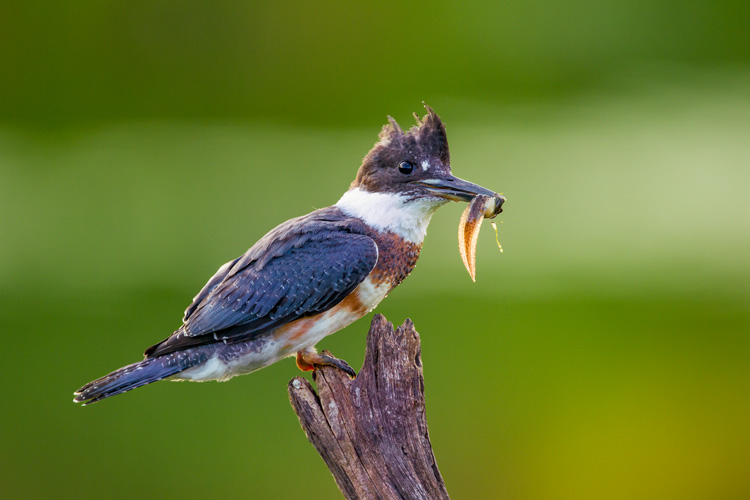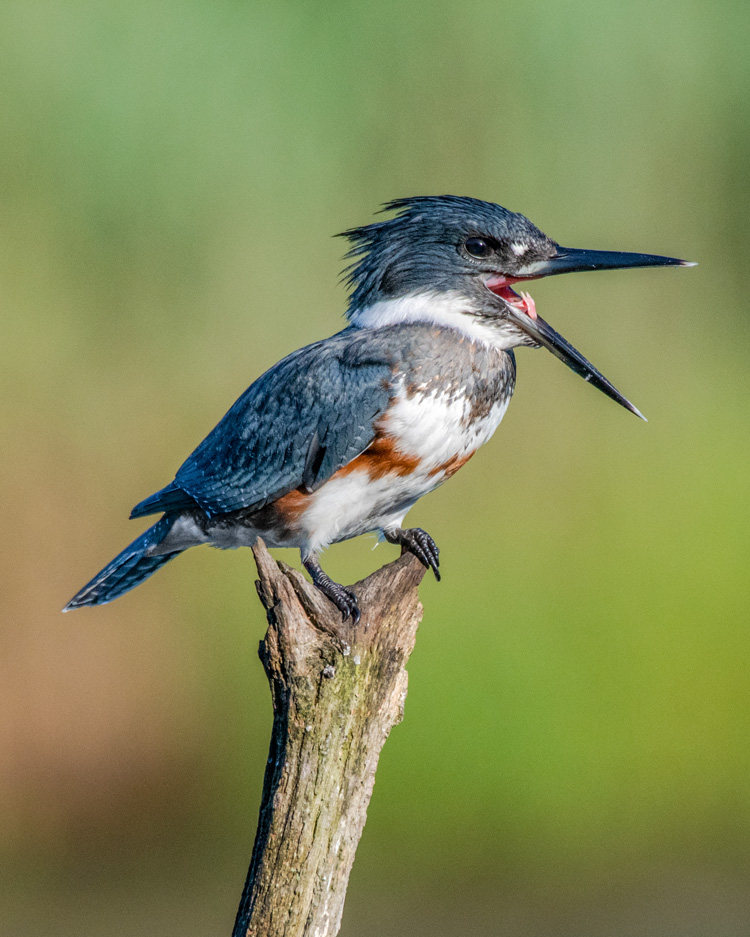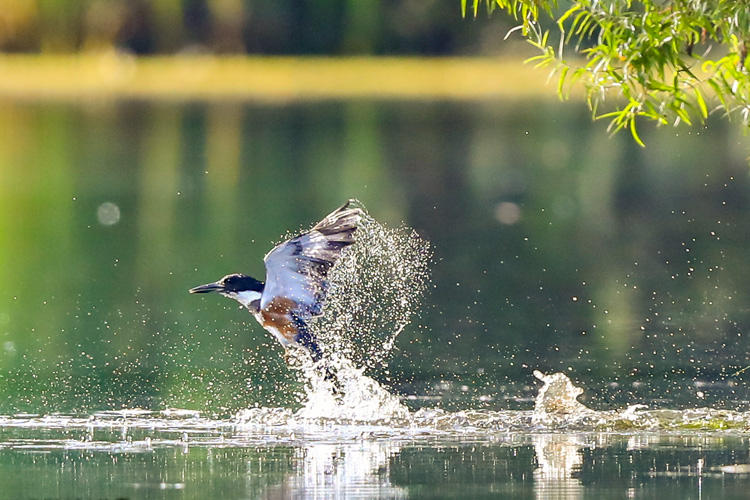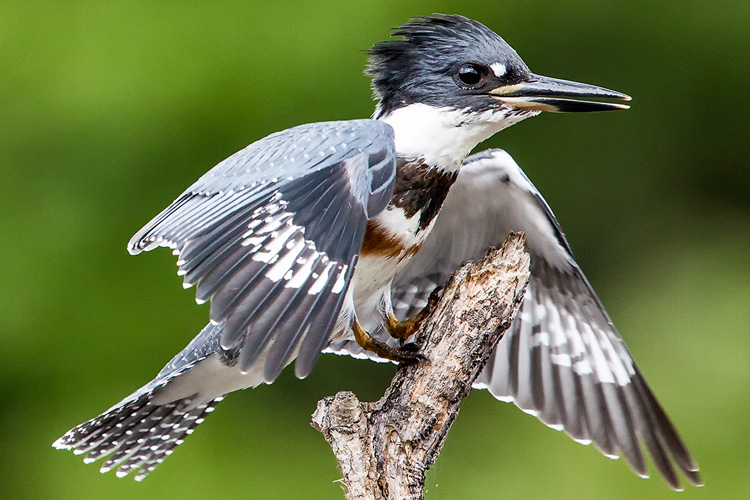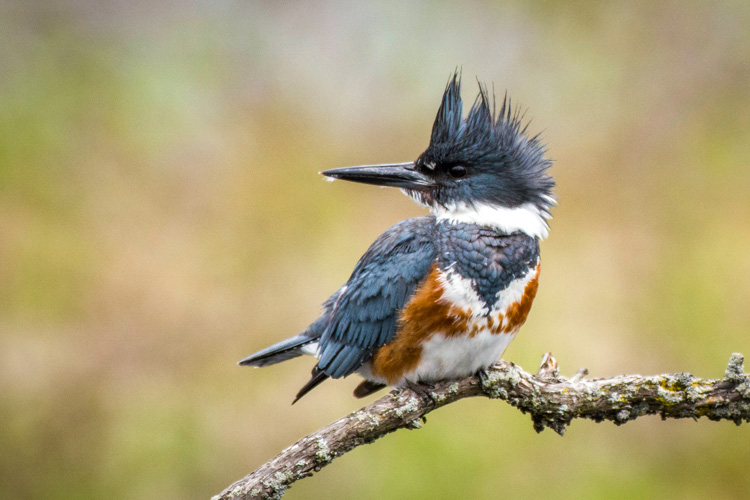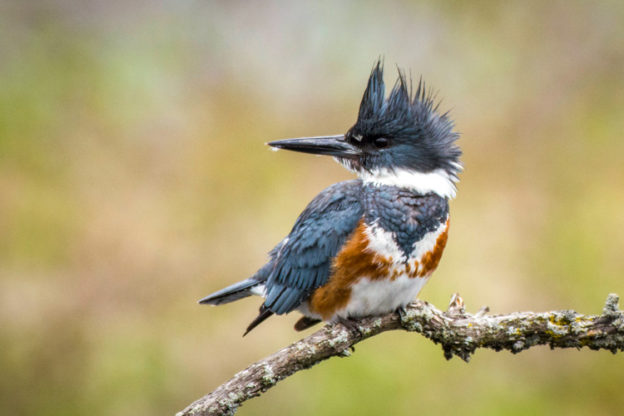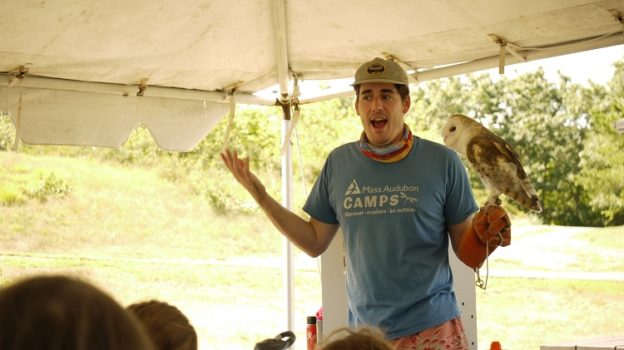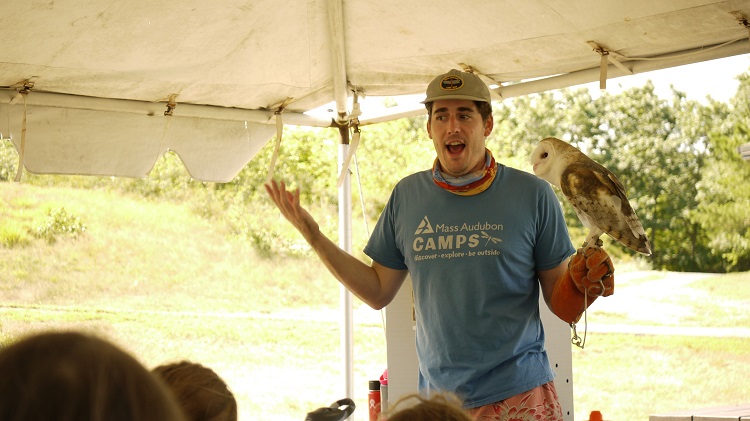“He may generally be seen sitting on some post or dead branch, near a solitary mill-dam, quietly watching his prey in the element below.”
William Peabody, in his 1839 report to the state legislature on the birds of Massachusetts.
Belted Kingfishers are widespread not only in Massachusetts but across North America. Still, you’d do well to learn to recognize their call, as you are far more like to hear one before you see it: They periodically utter a dry, metallic rattle that’s evocative of either the Predator, for fans of science-fiction/action movies, or one of those spinning, ratcheted noisemakers popular at New Year’s Eve celebrations.
Kingfishers favor lower elevations near waterways of all kinds, where they can dig their burrows to nest in earthen banks and mounds with little vegetation. If you’re looking to spot one on your next walk or hike, aim for trails along calm waters, where they dive to capture fish and crayfish in their long, straight bills. They love a good perch overlooking a wide river or lake, favoring branches or dead tree snags that give them a literal birds-eye view of their prey in the placid waters below.
An interesting point of note: Belted Kingfishers are one of the few bird species in which the female is more brightly colored than the male. Although both sexes sport a rakish-looking, ragged crest, males have a single, grey-blue band across their white breasts, while females have both a blue and a chestnut band.
Enjoy these five photos from the annual Picture This: Your Great Outdoors photo contest, and remember to submit your own nature photography to the 2020 contest soon—the September 30 deadline is fast-approaching!
